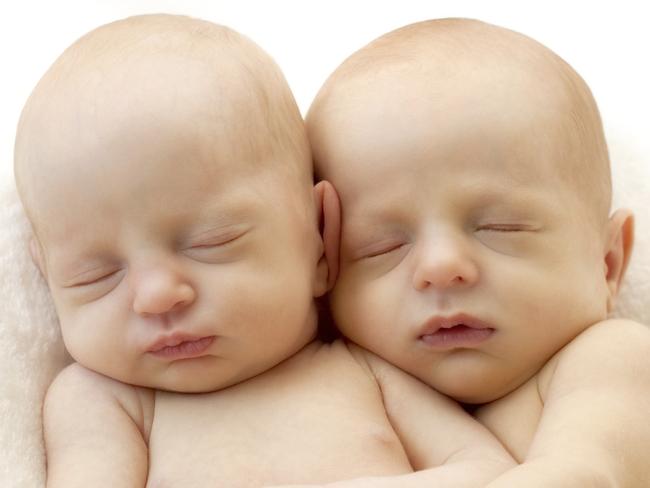Doctors identify a new type of twins
Doctors have discovered a new type of twin so “extraordinarily rare” there’s only two sets that have ever been found worldwide — and one of them is in Brisbane.
QLD News
Don't miss out on the headlines from QLD News. Followed categories will be added to My News.
DOCTORS have discovered a new type of twin so “extraordinarily rare” there’s only two sets that have ever been found worldwide — and one of them is in Brisbane.
Geneticists describe the siblings, born at the Royal Brisbane and Women’s Hospital in 2014, as neither identical nor fraternal, but somewhere in between.
New doctor follows in twin sister’s footsteps
Inside the lives of identical twin sisters who married identical twin brothers
‘World’s most identical’ twins reveal joint pregnancy plans
Their 28-year-old first-time mother was told “unequivocally” she was carrying identical twins after an ultrasound six weeks into her pregnancy.
But doctors were perplexed when another scan at 14 weeks showed she was carrying a boy and a girl.
Advanced chromosomal testing has revealed the twins share 89 per cent of their genes, compared with identical twins who have the same DNA and fraternal twins, who are 50 per cent genetically similar.
-

Scientists have dubbed the duo, who are developmentally normal, as sesquizygotic — or semi-identical.
They share the same DNA from their mother but only 78 per cent of genes from their father.
“They look more alike than you’d expect of a brother and sister,” said clinical geneticist Michael Gabbett, of the Queensland University of Technology.
“If you grew the boy’s hair long, or cut the girl’s hair short, then you’d think they were identical twins. They’re a cute boy and girl.”
The parents of the twins do not wish for them to be identified.
Dr Gabbett and foetal medicine expert Professor Nick Fisk, who investigated the case, said they believed the twins resulted from their mother’s egg being simultaneously fertilised by two of their father’s sperm before dividing.
Identical twins result when a single egg is fertilised by a single sperm and divides into two. Fraternal twins occur when two eggs are fertilised by two sperm.

The Brisbane twins’ medical history is reported in the prestigious New England Journal of Medicine today (Thursday February 28).
Sesquizygotic twins were first reported in The Journal of Human Genetics in 2007.
In a similar scenario to the Brisbane case, the American twins were found to be identical on their mother’s side, but shared about half of their father’s DNA.
Dr Gabbett said attempts to identify other cases by searching twin databases worldwide, including at the Brisbane-based QIMR Berghofer Medical Research Institute, had failed.
“Other cases could be running around healthily and no-one would know that they’re semi-identical,” he said.
The little girl in the Brisbane case developed a blood clot just before birth, resulting in her having her right arm amputated below the shoulder at four weeks of age. Doctors believe this was coincidental and not associated with her rare genetics.
She also had her ovaries removed at three years of age because of concerns about the twins having an increased risk of a rare type of cancer, known as gonadoblastoma, because of their chromosomal makeup.
Dr Gabbett said they were otherwise normal.



